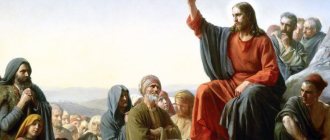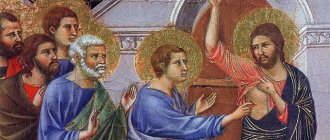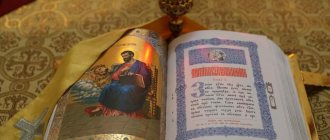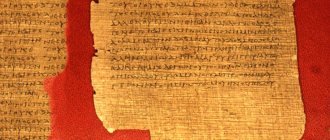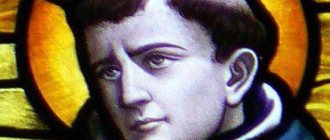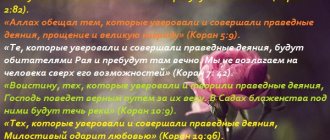On October 19, Orthodox Christians commemorate Apostle Thomas. He was born in the Galilean city of Peneas. When Jesus Christ passed through cities and villages, Thomas, hearing His preaching and seeing His miracles, decided to follow the Lord. He fully justified the title of disciple of Christ and was numbered among the twelve apostles.
After the ascension of Jesus Christ into heaven and the descent of the Holy Spirit, the apostles cast lots among themselves where each of them should go to preach the Word of God. Thomas's lot fell to go to India to teach the true faith to the various peoples who lived there: the Parthians and Medes, the Persians and Hyrcanians, the Bactrians. According to John Chrysostom , the Apostle Thomas preached to "savage, ferocious and bloodthirsty nations."
One day the apostle was introduced to the Indian king as a very skilled architect, and the king ordered Thomas to build a magnificent palace for him. Thomas said that he would build such a palace, and it would be even better than the king could imagine. For the construction, the apostle received a lot of gold, which he distributed to the poor and needy. Two years passed, and the king again invited the apostle to his place and asked what had been accomplished during this period. Thomas replied that the palace was almost ready, all that remained was to finish the roof. The delighted king again gave Thomas gold so that the roof would match the splendor and beauty of the palace. The apostle again distributed all this money to the sick, poor and poor people.
Then they reported to the king that nothing had yet been built in the place where the palace should stand. The angry king invited Thomas and asked if he had built anything, and the apostle replied that the palace was ready, but he built it in heaven. “When you pass from this temporary life,” said Thomas, “there in heaven you will find a beautiful palace in which you will dwell forever.” The king suspected deception in this answer and decided that the apostle was openly mocking him, and therefore ordered him to be tortured. After the torture, Thomas continued to preach. For the conversion to Christ of the son and wife of the ruler of the Indian city of Meliapora (Melipura), the holy apostle was imprisoned, suffered torture and died.
During his lifetime, Thomas had to go through a difficult path of spiritual maturation in order to receive a special gift: to heal illnesses. According to Church Tradition, Saint Thomas the Apostle founded Christian Churches in Palestine, Mesopotamia, Parthia, Ethiopia and India.
Question answer
Hierarchy of the Russian Orthodox Church. Infographics
In the Gospel, the Apostle Thomas is mentioned at the moment when the Lord went to Judea to raise His friend Lazarus . In response to Christ’s desire to go to Judea, the apostle turned to the other disciples with the words: “Let us go and die with Him.”
Another episode of the Gospel of John mentions Thomas during the Last Supper. On this night, on the eve of His Passion on the Cross, Christ holds his last conversation with his disciples and establishes the Sacrament of the Eucharist. When Judas Iscariot had already left the Supper to betray Christ, the Savior told the apostles that He would be the first to enter the Kingdom of His Father and prepare a place for them. After these words of Christ, the Apostle Thomas asks: “Lord! We don't know where you're going; and how can we know the way? To the question of the Apostle Thomas, Christ answered with words that went down in the history of all mankind: “I am the way and the truth and the life; no one comes to the Father except through Me.”
There is also an episode in Scripture when Thomas did not believe in the resurrection of Christ. According to the Gospel of John, Thomas was absent during the first appearance of Jesus Christ to the other apostles after the Resurrection. Having learned from the other apostles that Jesus had risen from the dead and was coming to them, Thomas said: “Unless I see in His hands the marks of the nails, and put my finger into the marks of the nails, and put my hand into His side, I will not believe.” "(John 20:25). Appearing to the apostles again, Jesus invited Thomas to put his finger into the wounds, after which Thomas believed and said: “My Lord and my God!” (John 20:28). The Holy Scriptures do not say that Thomas refused to do this or nevertheless touched the wounds of Christ.
Question answer
Do saints have ranks?
The episode even gave rise to the expression “Doubting Thomas,” which has become a household word and denotes an incredulous listener.
Martyr
For preaching Christianity, Thomas was pierced with a spear on December 19, 72, and died three days later, on December 21 in Melipura (near Madras). There he was buried, and for centuries pilgrimages have been constantly made to the tomb of the apostle.
From India to Italy. It is believed that the relics of Thomas were transferred from India to the Syrian city of Edessa. In the 11th century, the crusaders, in order to save the relic from the Muslims, brought it to the island of Chios. And in the 13th century, Italian sailors brought them to the city of Ortona (Abruzzo), where they are currently located.
Notes
- ↑ 1234
Thomas, the Apostle // Encyclopedic Dictionary of Brockhaus and Efron: in 86 volumes (82 volumes and 4 additional). - St. Petersburg, 1890-1907. - [www.omolenko.com/bogosluzhenia/prolog.htm?p=24#toc10 Synaxarion in the week of Fomin]
- [www.lopbible.narod.ru/joh/txtjoh11.htm Gospel of John, chapter 11] // Lopukhin’s Explanatory Bible
- “ He forgot about his previous demand and no longer wants to touch the wounds on the body of Christ
.” ([www.lopbible.narod.ru/joh/txtjoh20.htm Gospel of John, chapter 20] // Lopukhin’s Explanatory Bible) - “ See how one who at first did not believe, from a touch on his rib, became an excellent theologian
” / Theophylact of Bulgaria. [feofilakt.ru/ot-ioanna/glava-20 Commentary on the Gospel of John] - Meshcherskaya E. N.
Acts of Judas Thomas (cultural and historical background of the early Syrian legend). — M.: Science. Main editorial office of eastern literature, 1990. - pp. 129-130. — ISBN 5-02-016627-8. - K. S. Latourette, A History of the Expansion of Christianity,
7 vols., London, 1940-49 - Edward Gibbon, The Decline and Fall of the Roman Empire,
London, 1957 - Koenraad Elst, Negationism in India: Concealing the Record of Islam,
New Delhi, 1992, - TR Vedantham, “St. Thomas Legend" in the South Madras News,
Madras, 1987 - Ishwar Sharan, The Myth of Saint Thomas and the Mylapore Shiva Temple,
New Delhi, 1995 - ↑ 12
Thomists // Encyclopedic Dictionary of Brockhaus and Efron: in 86 volumes (82 volumes and 4 additional). - St. Petersburg, 1890-1907. - ↑ 123
[www.pravmir.ru/udivitelnye-fakty-prebyvaniya-apostola-fomy-v-indii/ Amazing facts about the stay of the Apostle Thomas in India], translated from English by Marina Leontyeva // on the website “Orthodoxy and Peace” - ↑ 1 2 3
[www.pravoslavie.ru/put/070808134931.htm
Natalya Guseva
, On the relics of the Apostle Thomas] // on the website Pravoslavie.RU - [www.pravoslavie.ru/orthodoxchurches/40025.htm Early Christian preaching in China. Part 1 / Local Churches // project of the portal Pravoslavie.Ru]. www.pravoslavie.ru. Retrieved November 10, 2015.
- [www.tommasoapostolo.it/index.php/descrizione-cattedrale/storia/galleria-fotografica Basilica of St. Thomas, the Apostle]
- India in the modern geographical sense is the southern part of the Asian continent, which includes the middle of the three southern peninsulas of the continent and the neighboring part of the mainland to the huge mountain ranges that separate it from central Asia. But ancient writers often called all the southern rich countries of Asia, about which they had only vague ideas, the common name of India. The Medes lived next to Persia, in the western part of Iran, south of the Caspian Sea and were subsequently conquered by the Persians. The Parthians also lived in the neighborhood of the Persians, in a vast country from the Euphrates to the Oxus and from the Caspian Sea to the Indian Sea; in the 3rd century BC were conquered by the Romans. The Persians lived in the southern part of Iran. The Hyrcanians lived along the banks of the Euphrates and Tigris and were conquered by the Persians. The Bactrians lived in the northeast of Iran. Brahmins are residents of India proper, mainly Indian priests.
Founded communities
- Malankara Orthodox Church
- Syro-Malabar Catholic Church - one of the Eastern Catholic churches (East Syriac rite)
- Chaldean Syriac Church (East Syriac Rite, branch of the Assyrian Church of the East)
- Indian Orthodox Church (Malankara Orthodox Church, West Syriac Rite)
- Jacobite Syriac Christian Church (West Syriac Rite)
- The Syro-Malankara Catholic Church is one of the Eastern Catholic churches (West Syriac rite)
- Church of Mar Thoma, reformed on the basis of the West Syriac Rite, in union with the Anglican Church
Geography of communities
- Palestine
- Mesopotamia
- Parthia
- Ethiopia
- India[17]


